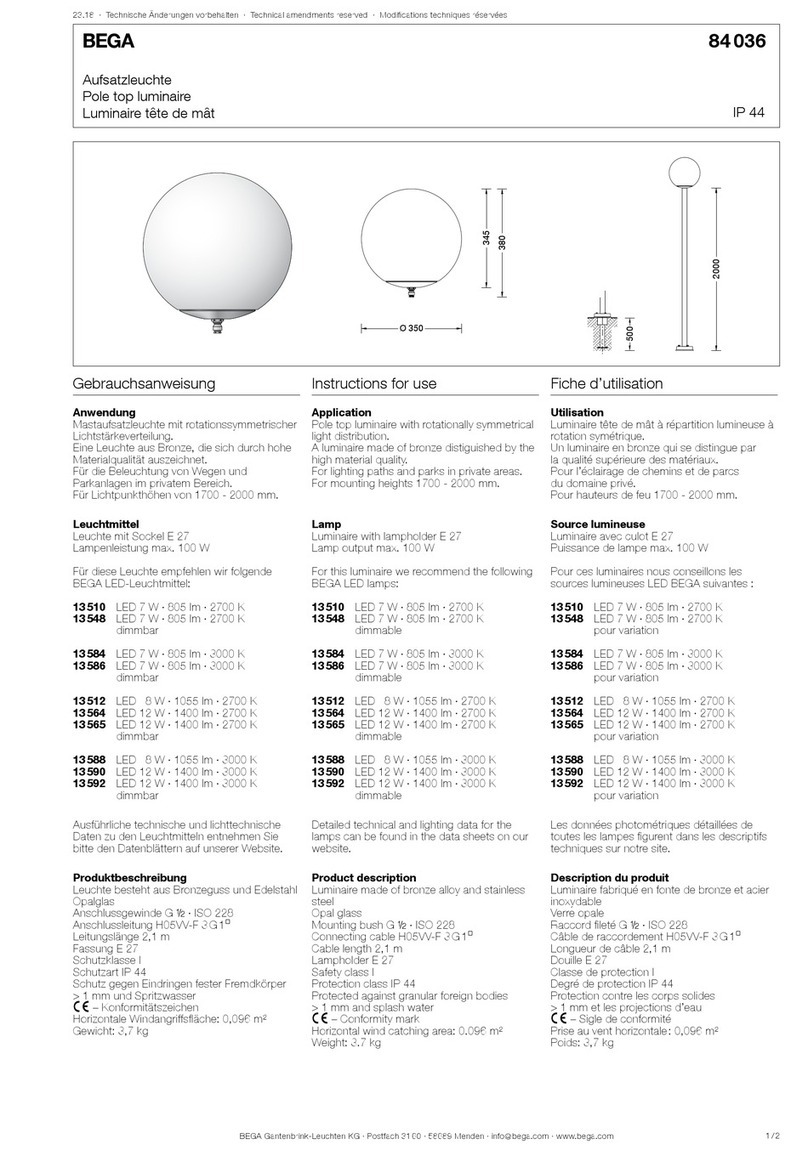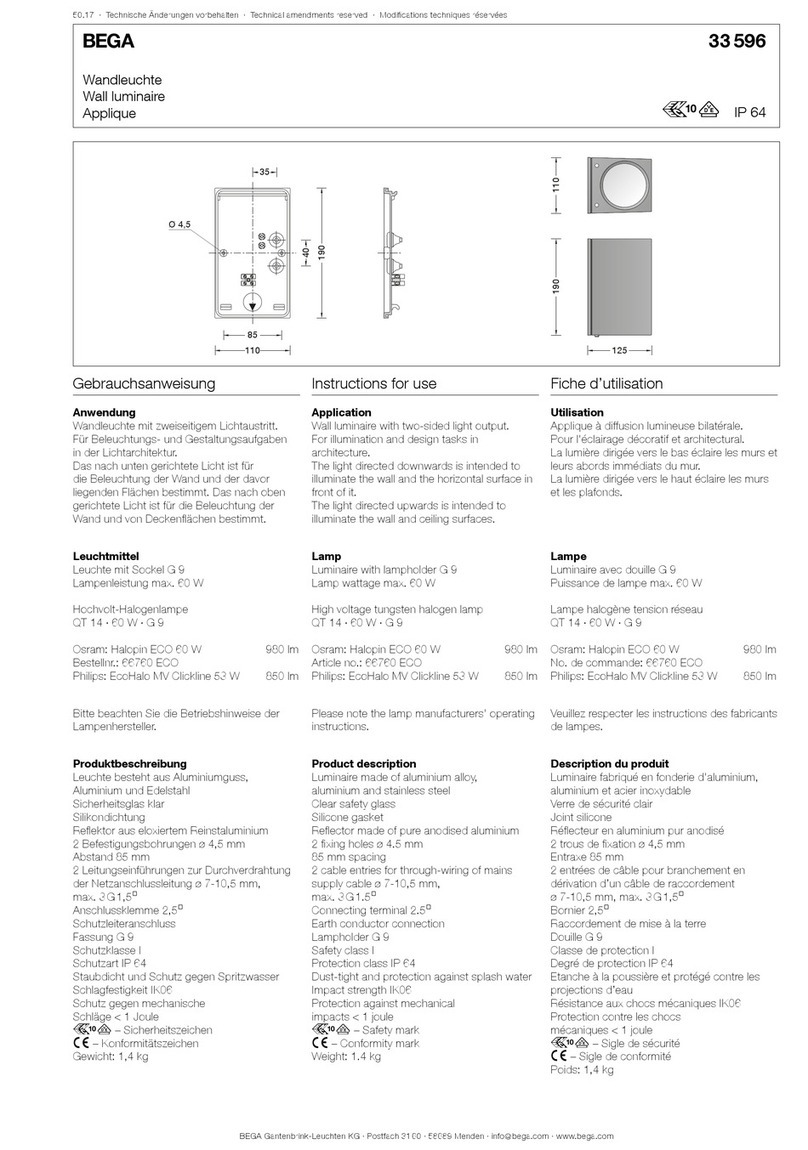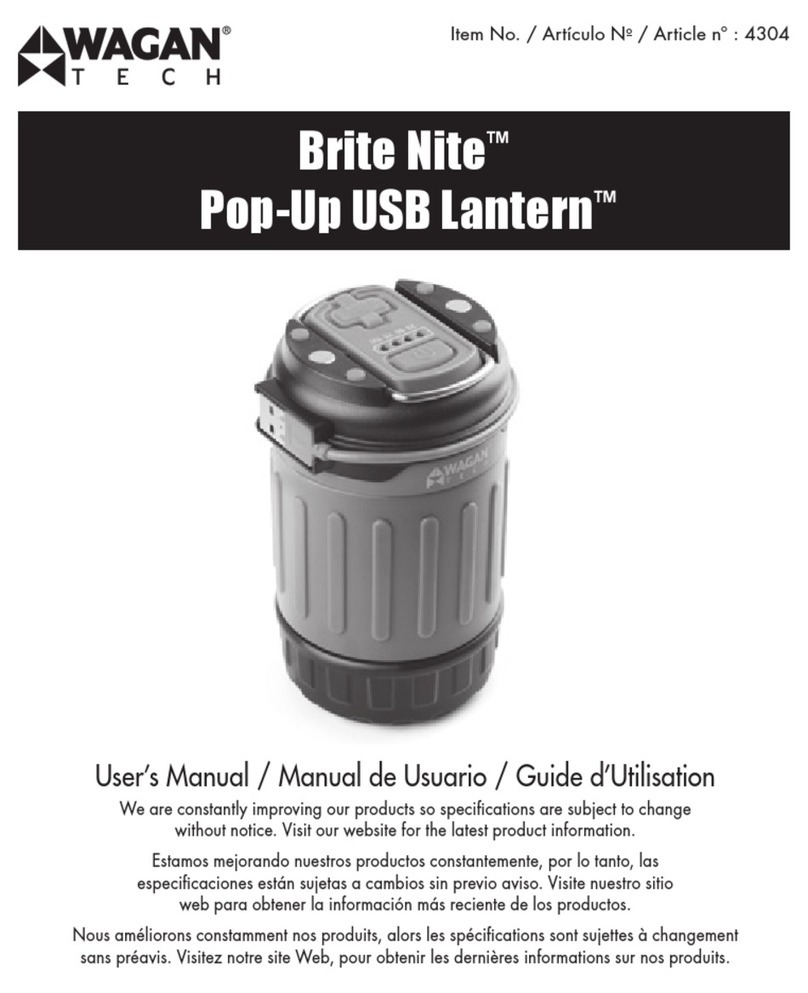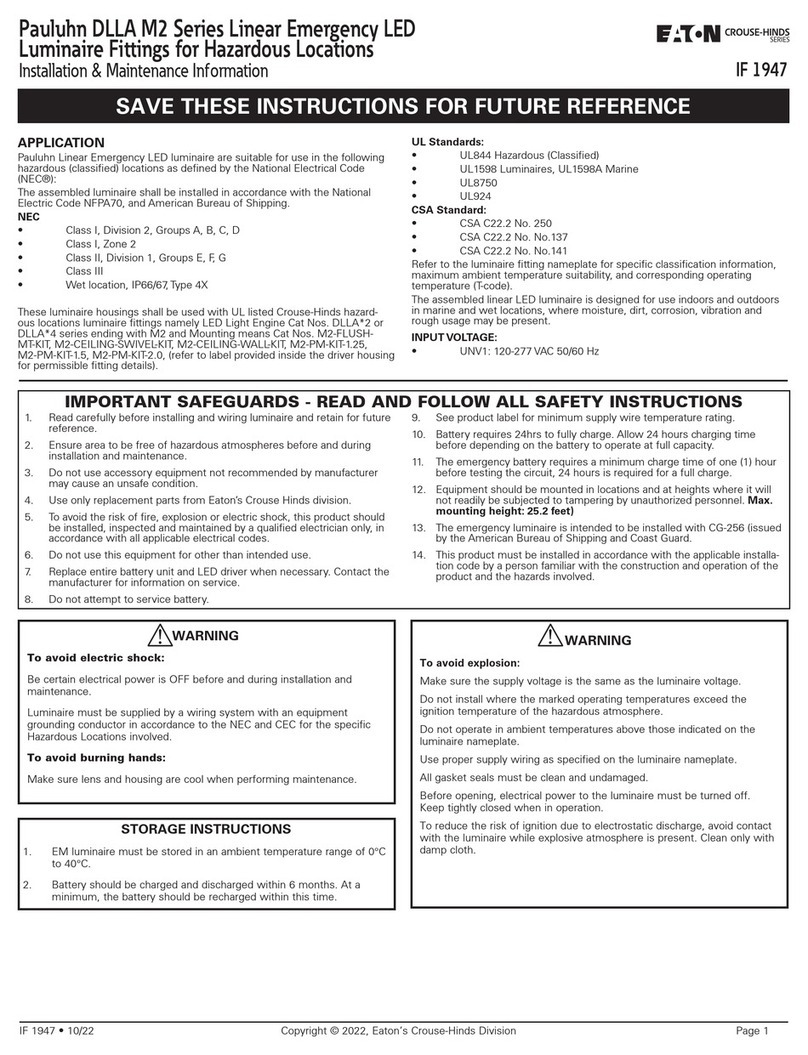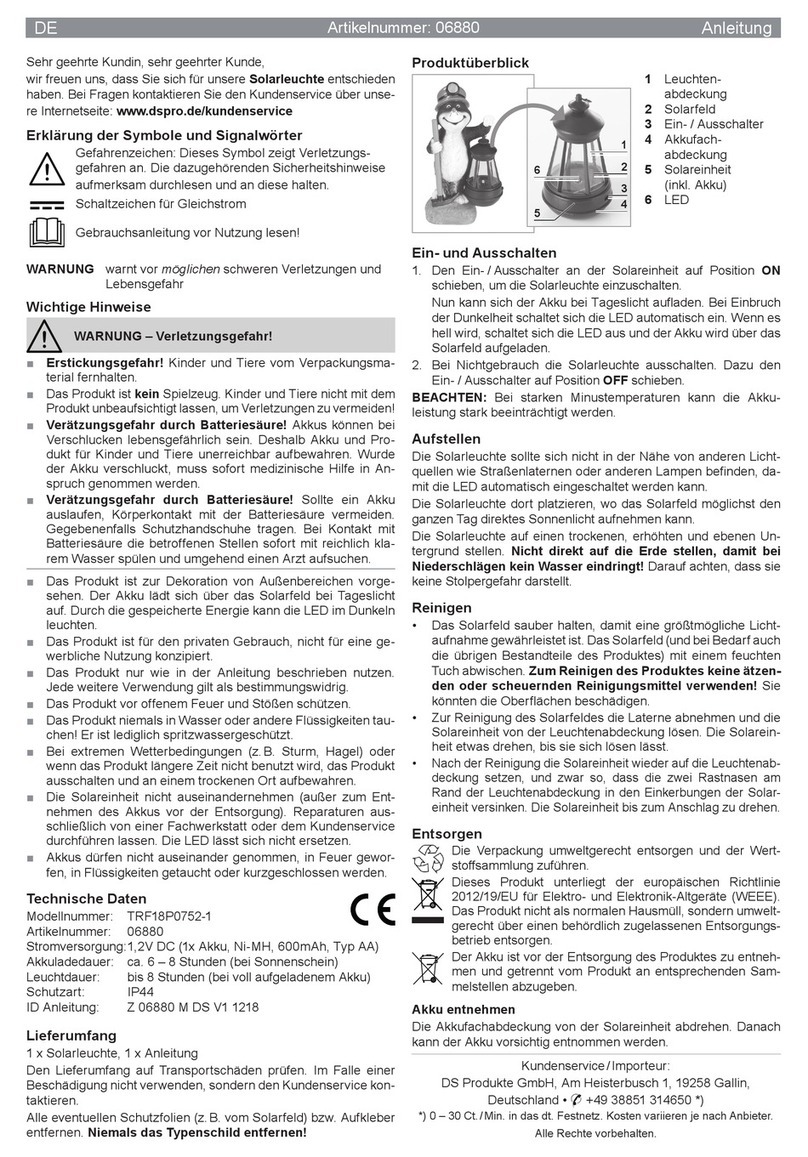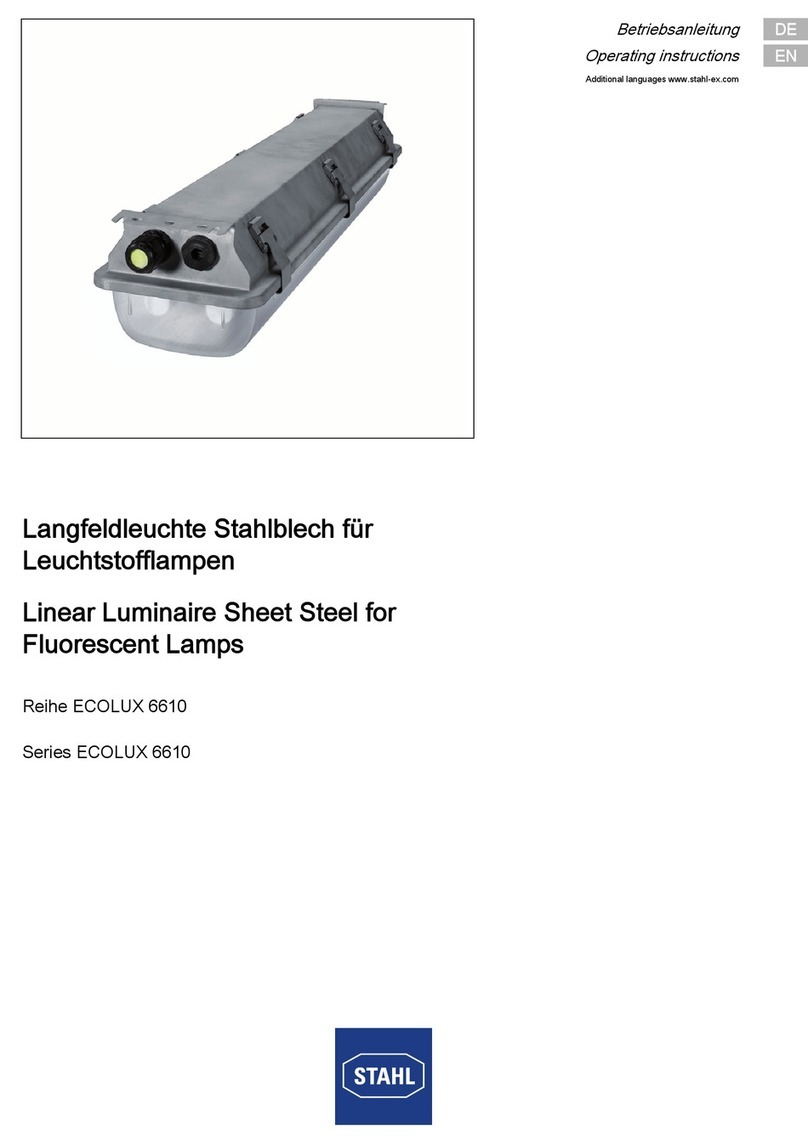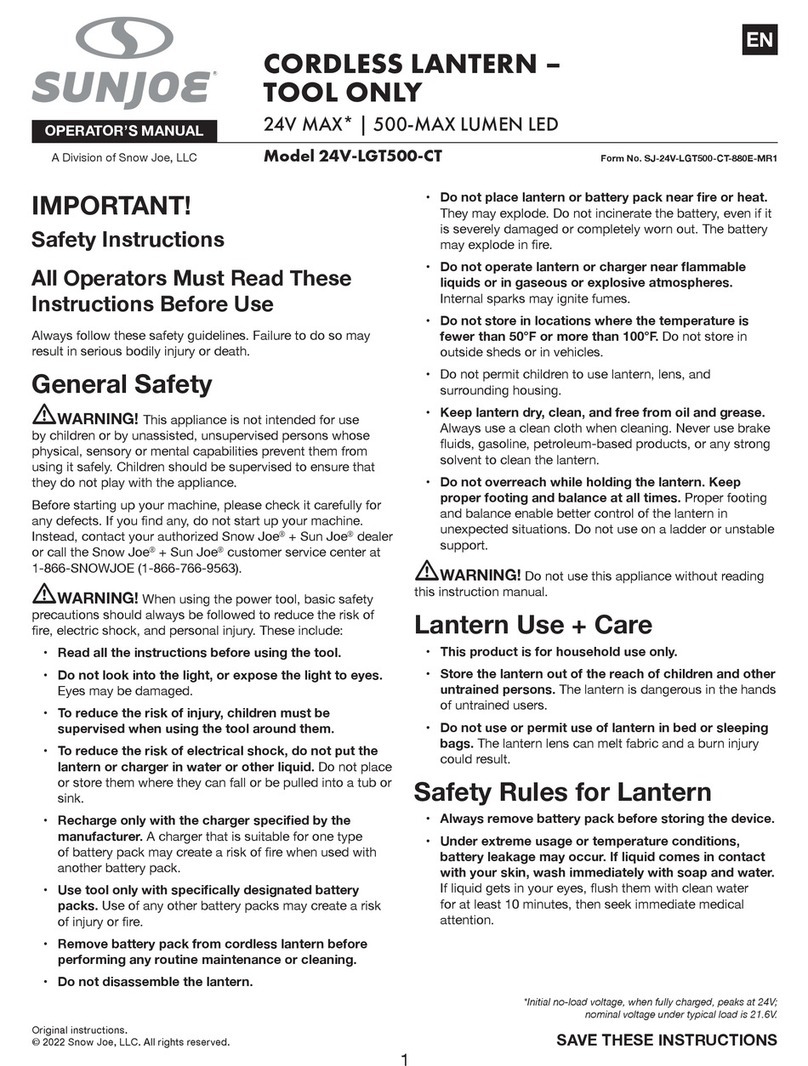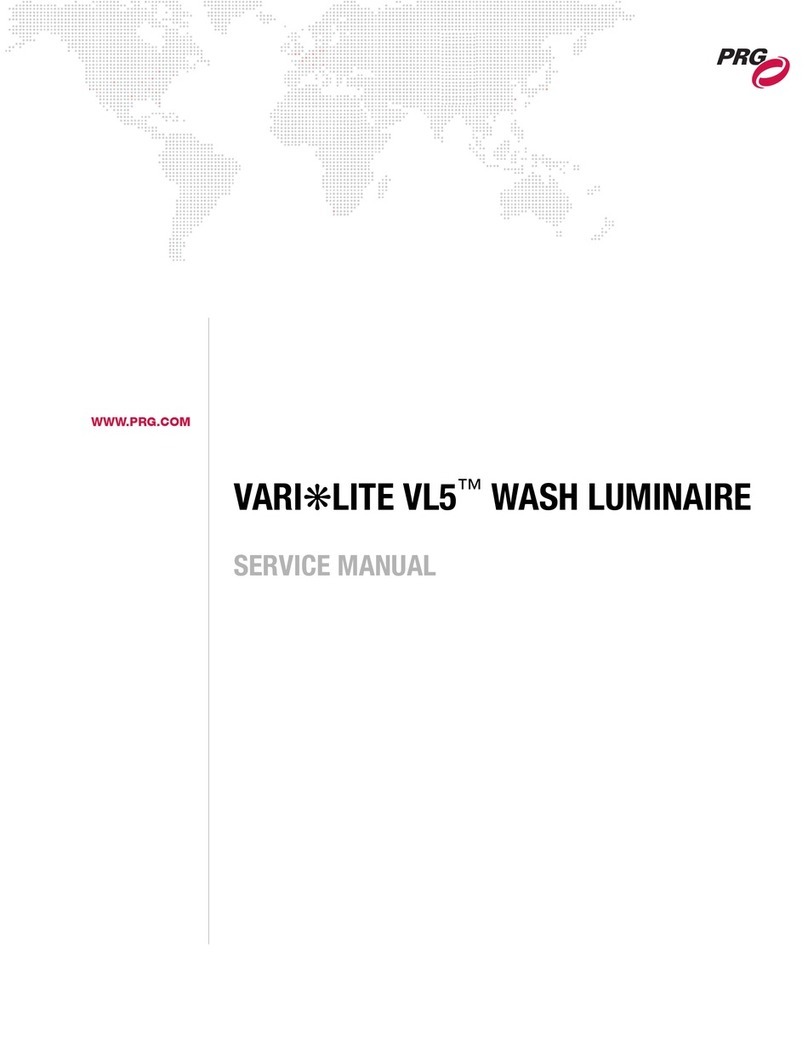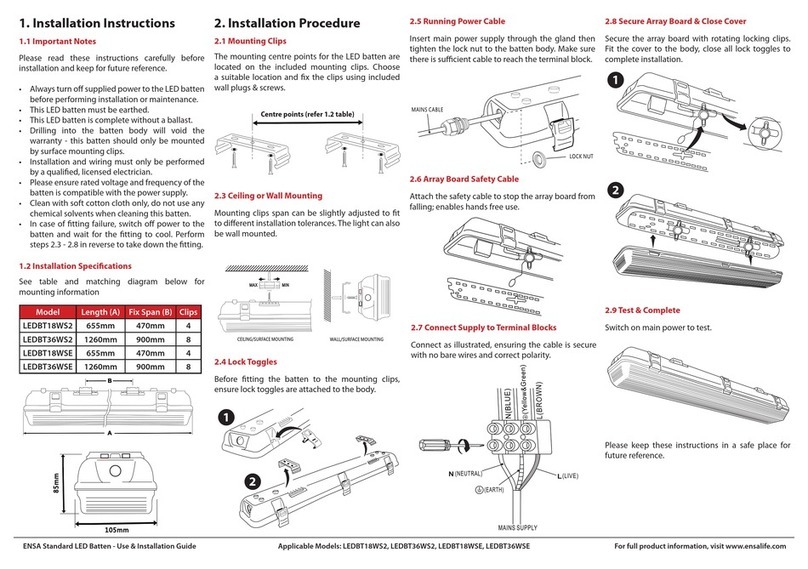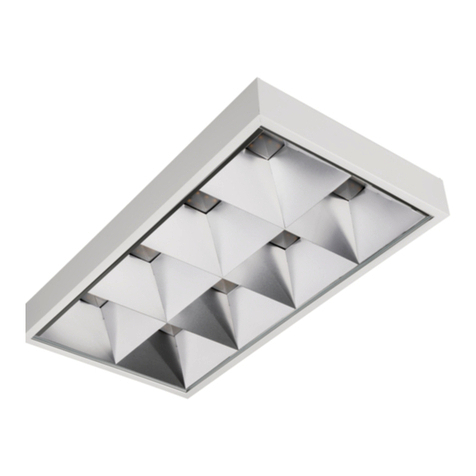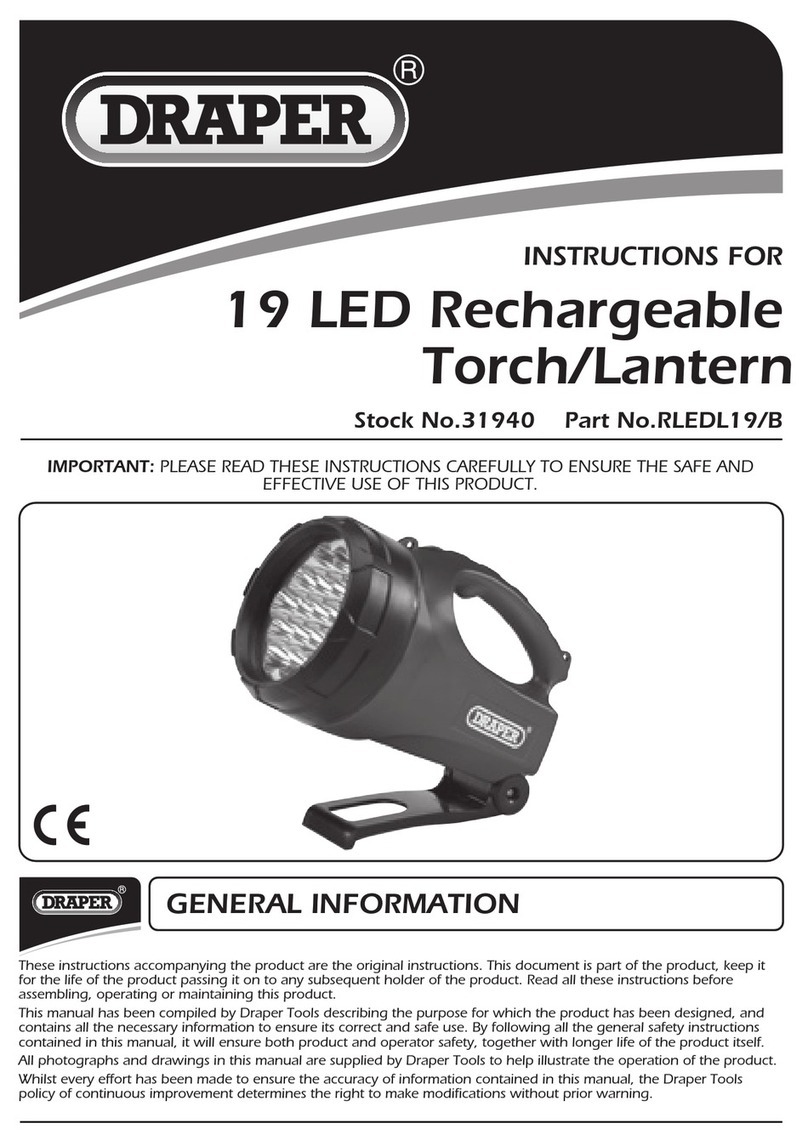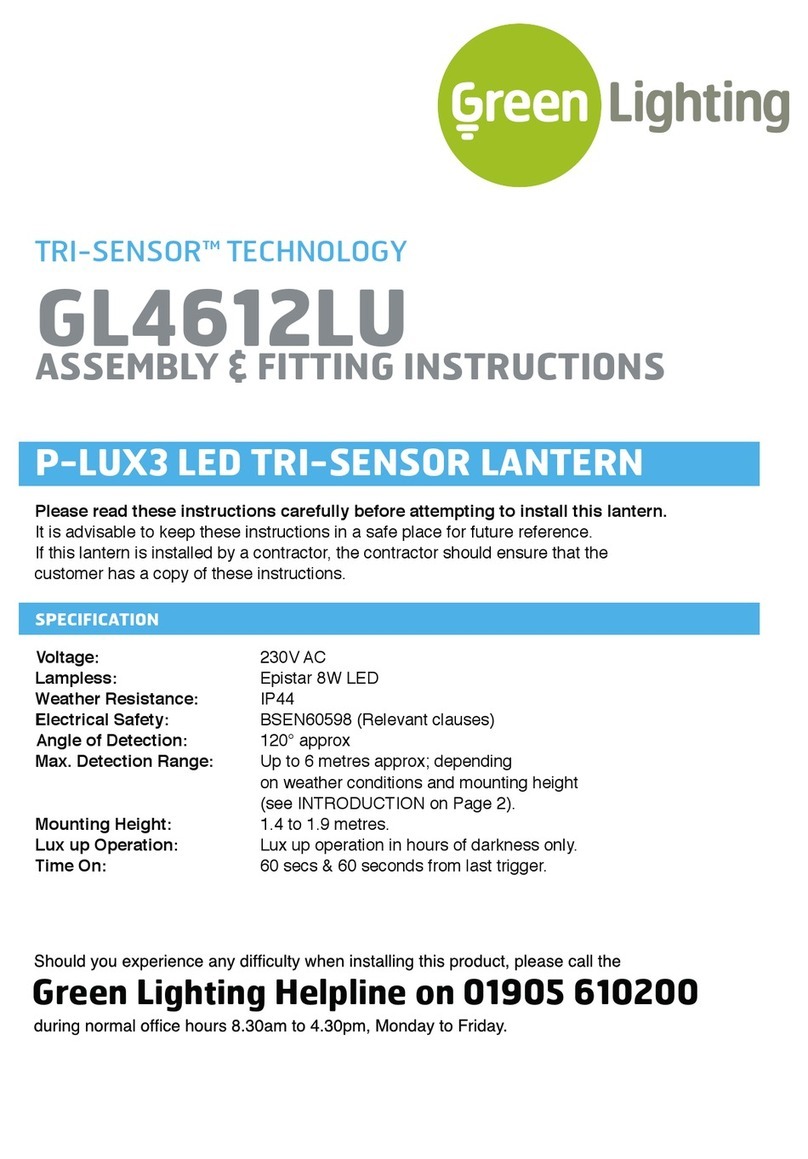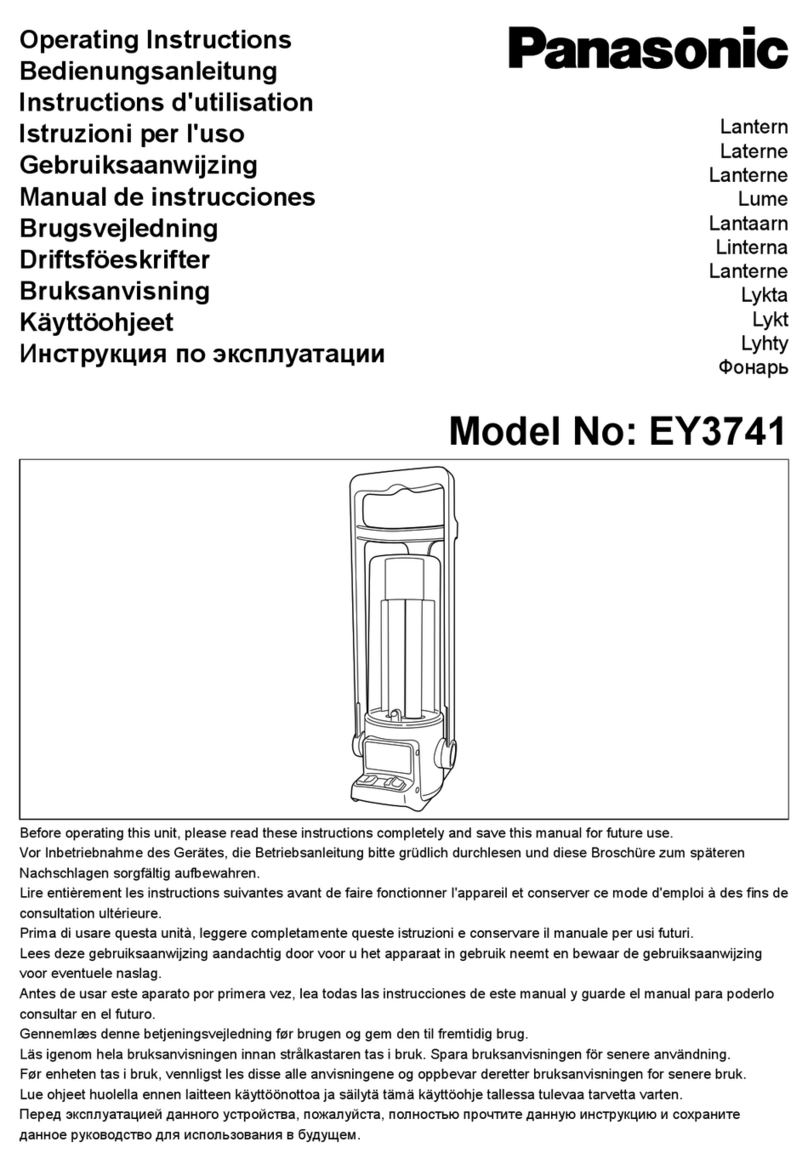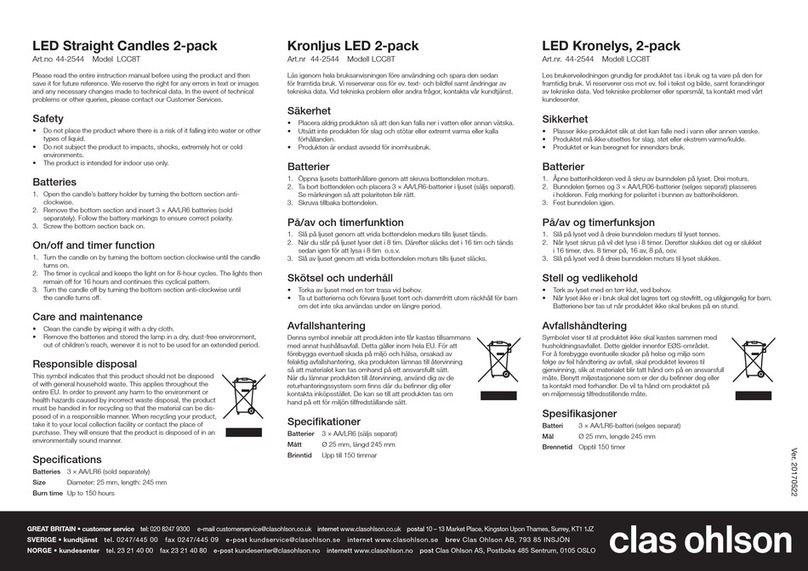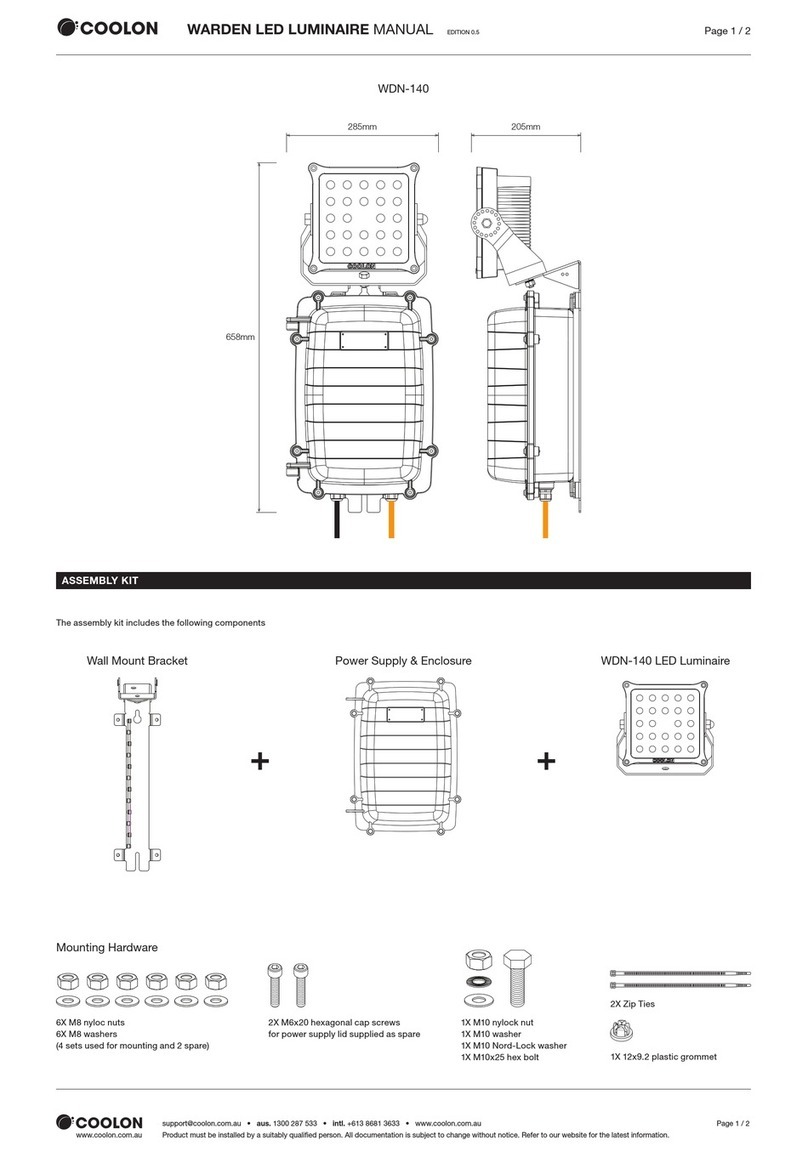
TITAN
Stainless Steel Globe Lantern
Stainless Steel Housing
Glass Diffuser
Wall Box Cover
PIR (Motion Sensor)
LED Comfort Light
INTRODUCTION
The Titan Stainless Steel Globe Lantern is designed
for use outdoors.
The unit offers you an LED Comfort Light facility that is
always on during the hours of darkness.
Also during the hours of darkness, the built-in passive
infrared (PIR) sensor turns on the main Globe Light
lamp when the PIR sensor detects a moving heat
source in its coverage area. During daylight the built-in
photocell saves energy by deactivating the LED
Comfort Light and the main Globe Light lamp.
Note: Read this entire manual before you start to
install the system.
SAFETY PRECAUTIONS
DO NOT install when it is raining.
Isolate the power supply before installation.
UK Building Regulations require outdoor mains
installations be carried out by a qualified
electrician.
BS7671: 2008 IEE Wiring Regulations must be
complied with in all respects.
HO5RNF round flexible cable and drip loops must
be used to avoid water ingress damage to the
unit.
Ensure that the power supply is protected by a 6A
circuit breaker or suitable fuse.
Ensure minimum distance of 2.5m from objects in
front of the unit.
The unit must be installed vertically (FIGURE 1a)
NOT at an angle (FIGURE 1b).
FIGURE 1a FIGURE 1b
CHOOSING A MOUNTING LOCATION
For the best results, mount the Globe Light onto
normal brickwork 1.8~2.5m above the ground.
Avoid aiming the PIR sensor at pools, heating
vents, air conditioners or objects that may change
temperature.
Avoid pointing the PIR sensor at trees or shrubs
or where the movement of pets or animals may be
detected.
Avoid locations where direct sunlight will shine
onto the front of the PIR sensor for long periods,
deterioration of the Fresnel lens may occur
leading to poor triggering response.
Prior to mounting, keep in mind that the PIR
sensor is more sensitive to a heat source moving
across its coverage area and less sensitive to a
heat source that moves directly towards the PIR
sensor (FIGURE 2).
FIGURE 2
INSTALLATION
For the best results, mount the Globe Light onto
normal brickwork 1.8~2.5m above the ground.
Unscrew the two nuts on the front plate of the unit.
Position the mounting plate on the wall and mark
the holes before drilling.
There is an Up arrow on the mounting plate
ensure this is pointing Up when marking the holes
for drilling. FIGURE 3
FIGURE 3
Up

